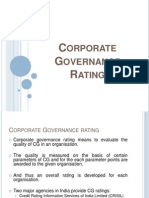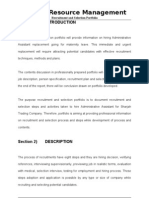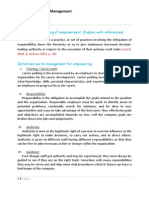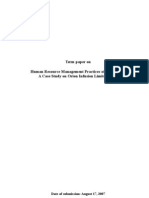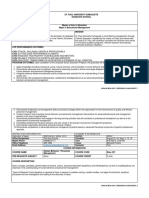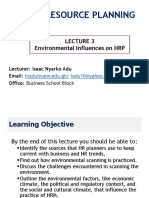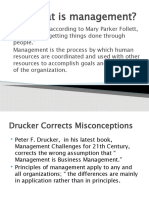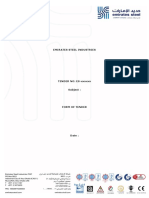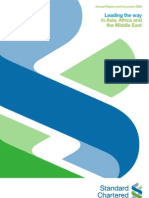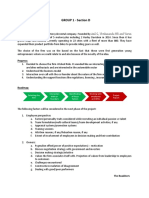Functions of Personnel Management
Functions of Personnel Management
Uploaded by
Bibin Raj B SCopyright:
Available Formats
Functions of Personnel Management
Functions of Personnel Management
Uploaded by
Bibin Raj B SOriginal Description:
Copyright
Available Formats
Share this document
Did you find this document useful?
Is this content inappropriate?
Copyright:
Available Formats
Functions of Personnel Management
Functions of Personnel Management
Uploaded by
Bibin Raj B SCopyright:
Available Formats
Functions of Personnel Management: 1.
Managerial Functions 2. Operative Functions
Functions of Personnel Management: 1. Managerial Functions 2. Operative Functions!
1. Managerial Functions:
The Managerial functions of a personnel manager involve POSDCORB (Luther Gullick) i.e., Planning,
organisation, staffing, directing, coordinating, reporting and budgeting of those who actually perform
the operative functions of the Personnel Department.
The following are the managerial functions (viz. planning, organising, directing and controlling)
performed by a personnel department:
A. Personnel Planning:
Planning lays down a pre-determined course to do something such as what to do, how to do, where to
do, who is to do etc. A personnel manager plans in advance the trend in wages, labour market, union
demands etc. Through planning, most of the future problems can be anticipated.
B. Organising:
According to J.C. Massic, An organisation is a structure, a framework and a process by which a cooperative group of human being allocates its task among its members, identifies relationships and
integrates its activities towards common objectives. The personnel manager has to design the structure
of relationships among jobs, personnel and physical factors so that the objectives of the enterprise are
achieved.
C .Directing:
This function relates to guidance and stimulation of the subordinates at all levels. The personnel
manager directs and motivates the employees of his department so that they work willingly and
effectively for the achievement of organisational goals,
D. Controlling:
A personnel manager has to constantly watch whether there is any deviation from the planned path.
Controlling is concerned with remedial actions. Continuous monitoring of the personnel policies
relating to training, labour turnover, wage payments, interviewing new and separated employees etc., is
the backbone of controlling.
If deviations are unavoidable, corrective action can be planned in advance. Controlling helps the
personnel manager to evaluate the performance of employees of the personnel department so far as the
operating functions are concerned.
2. Operative Functions:
The operative functions of the Personnel Department are also called service functions. These include.
(a) Procurement function
(b) Development
(c) Promotion, transfer and termination function
(d) Compensation function
(e) Welfare function
(f) Collective bargaining function
(g) Miscellaneous functions.
These functions of the personnel Department are discussed below:
(1) Procurement:
It includes:
(a) Recruitment i.e., tapping the possible sources from where prospective labour supply will come.
(b) Getting information regarding prevailing wage rates and job requirements.
(c) Selecting the best candidate by following a systematic selection procedure.
(d) Maintaining the records of employees.
(e) Introducing the new employee to the officers of the other departments such as Security Officer,
Time Keeper, and Cashier etc.
(2) Training or Development Function:
The training of the new employees and also of those who are being promoted is the crucial function of
Personnel Department. A training programme is devised for this purpose. The training increases the
skills and abilities of the employees.
The various aspects of training are:
(a) Training to new employees, instructors and supervisors.
(b) Training in safety equipments and various policies of companies.
(c) Training through improvement of education such as evening classes, films, Entertainment
programmes etc.
(d) Encouraging employees to give suggestions.
(3) Promotion, Transfer and Termination:
The performance of the employees is evaluated for the purpose of taking decisions concerning the
employment. Merit rating is undertaken for evaluation of the performance of the employees.
The functions of the Personnel Department in this regard are given below:
(a) To lay down a promotion policy.
(b) To formulate policies regarding transfer and termination.
(c) Analysis of voluntary separations and knowing the possible causes of such separations.
(4) Compensation:
The employees should get adequate and equitable remuneration for the work being done by them.
The functions of the Personnel Department concerned with fixation of fair wages are:
(a) To evaluate jobs and determine their worth in terms of money.
(b) To collaborate with those who formulate wage plans.
(c) To assist in formulation of policies regarding pension plans, profit sharing programmes, nonmonetary benefits, etc.
(d) To compare the wages of the enterprise with the industry and remove inconsistencies, if any.
(5) Welfare Activities:
These activities relate to physical and social well-being of the employees and include:
(a) Provision of medical facilities such as first aid, dispensaries, etc.
(b) Suggesting ways and means by which accidents can be eliminated or minimised.
(c) To make provisions for restaurants and other recreational facilities.
(d) To apply the labour laws effectively.
(e) To publish a plant magazine.
(6) Collective Bargaining:
It includes:
(a) To assist in the negotiations which are held with the union leaders?
(b) To know the grievances of employees and following their problems properly.
(7) Miscellaneous:
(a) To advise the line managers regarding administration of personnel policies.
(b) To secure co-ordination of all personnel activities.
(c) To have an effective communication system.
(d) To provide good working conditions.
You might also like
- Corporate Governance RatingDocument10 pagesCorporate Governance RatingMayur Devani75% (4)
- Recruitment and Selection PortfolioDocument14 pagesRecruitment and Selection PortfolioNoora Al Shehhi100% (1)
- Strama Research PaperDocument17 pagesStrama Research PaperKLD C100% (1)
- Six Sigma Implementation in DELL and WIPRODocument3 pagesSix Sigma Implementation in DELL and WIPROIndhu govindarajuNo ratings yet
- Syllabus - SMP 203 Systems Thinking - 2nd Semester 2022 2023Document17 pagesSyllabus - SMP 203 Systems Thinking - 2nd Semester 2022 2023Fernan Fangon TadeoNo ratings yet
- Banitog - Chapter 6 (Problem 1)Document3 pagesBanitog - Chapter 6 (Problem 1)MyunimintNo ratings yet
- Stone Cleaning Method Statement and Risk Assessment-1 PDFDocument6 pagesStone Cleaning Method Statement and Risk Assessment-1 PDFحمودي معزNo ratings yet
- Office of The Vice President For Academic AffairsDocument2 pagesOffice of The Vice President For Academic AffairsFrancis Jay EnriquezNo ratings yet
- Empowerment of Service QualityDocument2 pagesEmpowerment of Service QualityDusmahomedNo ratings yet
- Modules in Bres 2 Students'Document116 pagesModules in Bres 2 Students'Shey MendozaNo ratings yet
- Program Design StressDocument7 pagesProgram Design StressFelicity MaderseNo ratings yet
- 2017 2021 Pqa Government Criteria 53Document80 pages2017 2021 Pqa Government Criteria 53Glenn Sabanal Garcia100% (1)
- Human Resource Management Practices of Bangladesh: A Case Study On Orion Infusion Limited (OIL)Document28 pagesHuman Resource Management Practices of Bangladesh: A Case Study On Orion Infusion Limited (OIL)Zafour43% (7)
- Reformulated Regional Research Agenda VDocument50 pagesReformulated Regional Research Agenda VLeonilo B CapulsoNo ratings yet
- Synthesis of Government PlanningDocument3 pagesSynthesis of Government PlanningMaria Louella Casalme FloroNo ratings yet
- The Need For Employees Training and Development in An OrganizationDocument17 pagesThe Need For Employees Training and Development in An OrganizationGuna SekaranNo ratings yet
- Multimedia Teaching: It's Effect To Grade-12 SATURN and Their Academic Performance in Halapitan National High School.Document6 pagesMultimedia Teaching: It's Effect To Grade-12 SATURN and Their Academic Performance in Halapitan National High School.Sana OlNo ratings yet
- Unit 10 Tour Brochures & QuotationDocument9 pagesUnit 10 Tour Brochures & QuotationReinaNo ratings yet
- Call of The Time: Insititution Building, Human Capital Formation and The MillennialDocument11 pagesCall of The Time: Insititution Building, Human Capital Formation and The MillennialraveNo ratings yet
- Human Resource DevelopmentDocument8 pagesHuman Resource DevelopmentAtul Srcc100% (1)
- Training and Development: Assignment OnDocument8 pagesTraining and Development: Assignment OnShrishti MishraNo ratings yet
- M.A. HRM (2009-11) - WebDocument47 pagesM.A. HRM (2009-11) - Webmahtab_aliNo ratings yet
- Module in Financial Management 01Document17 pagesModule in Financial Management 01Karen DammogNo ratings yet
- Educ 207 - Human Behavior Personnel ManagementDocument8 pagesEduc 207 - Human Behavior Personnel ManagementEm Boquiren CarreonNo ratings yet
- OBE Org DEv SyllabusDocument8 pagesOBE Org DEv SyllabusKaren GayNo ratings yet
- Reflection in Seminar in Issues and Problem On EucationDocument2 pagesReflection in Seminar in Issues and Problem On Eucationmark bryan maculadaNo ratings yet
- Bachelor of Science in Hospitality ManagementDocument12 pagesBachelor of Science in Hospitality ManagementMecaylie BNo ratings yet
- The Global Manager's EnvironmentDocument6 pagesThe Global Manager's EnvironmentBogdan Alexandru DidaNo ratings yet
- The Nature and Challenge of Personnel Management FinalDocument116 pagesThe Nature and Challenge of Personnel Management FinalChickenNo ratings yet
- HRM Course OutlineDocument3 pagesHRM Course OutlineNaeem AkbarNo ratings yet
- Human Behavior in Organization Chapter2 SummaryDocument3 pagesHuman Behavior in Organization Chapter2 SummaryYI Lie Suddenly ZhangNo ratings yet
- Obe Syllabus SampleDocument5 pagesObe Syllabus Samplelei melendrezNo ratings yet
- 1.6challenges and Opportunity For Organization Behaviour 1Document13 pages1.6challenges and Opportunity For Organization Behaviour 1Balakrishna Nalawade N0% (1)
- Philosophy of HRMDocument2 pagesPhilosophy of HRMShagufta AliNo ratings yet
- SWOT AnalysisDocument15 pagesSWOT AnalysisjolinaNo ratings yet
- Employee BenefitsDocument14 pagesEmployee BenefitsUmar AliNo ratings yet
- Human Resource Planning: Environmental Influences On HRPDocument32 pagesHuman Resource Planning: Environmental Influences On HRPprophetic pastorNo ratings yet
- Functions of Human Resource DepartmentDocument3 pagesFunctions of Human Resource Departmentranjann349No ratings yet
- Redesigning Outcomes-Based Mechanical Engineering Course Syllabus Using The Constructive Alignment ApproachDocument32 pagesRedesigning Outcomes-Based Mechanical Engineering Course Syllabus Using The Constructive Alignment ApproachJournal of Interdisciplinary PerspectivesNo ratings yet
- Human Resource DevelopmentDocument44 pagesHuman Resource DevelopmentMarshal BhandaryNo ratings yet
- Accomplishment Report College/Department/ Unit: - NSTP-CWTS - For The Period ofDocument4 pagesAccomplishment Report College/Department/ Unit: - NSTP-CWTS - For The Period ofJhul'z Clave ConsulNo ratings yet
- Amendments To The PPDA Law: Execution of Works by Force AccountDocument2 pagesAmendments To The PPDA Law: Execution of Works by Force AccountIsmail A Ismail100% (1)
- Lecture 13 Alternatives Delivery ModesDocument23 pagesLecture 13 Alternatives Delivery ModesBarbeth Fame EbonNo ratings yet
- Staffing - A Function of ManagementDocument5 pagesStaffing - A Function of ManagementSEBASTIAN NTI BINFONo ratings yet
- THC011 Activity 8 Case Study: Multicultural Diversity in The Workplace For The Tourism ProfessionalDocument4 pagesTHC011 Activity 8 Case Study: Multicultural Diversity in The Workplace For The Tourism ProfessionalMichael CruzcabreraNo ratings yet
- Administration ProcessDocument5 pagesAdministration ProcessjohnNo ratings yet
- A Case Study On Occupational Health and Safety of Footwear Manufacturing IndustryDocument6 pagesA Case Study On Occupational Health and Safety of Footwear Manufacturing IndustryZakir KhanNo ratings yet
- Introduction To HRDDocument109 pagesIntroduction To HRDjeganrajrajNo ratings yet
- What Is ManagementDocument15 pagesWhat Is ManagementAvery Jan SilosNo ratings yet
- Performance Management in The Public SectorDocument5 pagesPerformance Management in The Public SectorRudzani MaishaNo ratings yet
- Oplan Tesda Abot Lahat: "Tvet Towards A NEW Normal"Document23 pagesOplan Tesda Abot Lahat: "Tvet Towards A NEW Normal"Daniel S. SantosNo ratings yet
- HPC 10 MiceDocument23 pagesHPC 10 MiceJian Miee Rama LequironNo ratings yet
- Chapter 01Document44 pagesChapter 01nazmulNo ratings yet
- Study Guide 12 - On-Site ActivitiesDocument2 pagesStudy Guide 12 - On-Site Activitiesalyssa jane astoNo ratings yet
- Module 1 - The Development of Human ResourcesDocument24 pagesModule 1 - The Development of Human ResourcesNicolle JungNo ratings yet
- Issues in International Human Resources ManagementDocument8 pagesIssues in International Human Resources Managementdobleaprild.26No ratings yet
- Importance of Human Resource ManagementDocument9 pagesImportance of Human Resource Managementt9inaNo ratings yet
- 07 - Selecting, Inducting, and Training EmployeesDocument8 pages07 - Selecting, Inducting, and Training EmployeesmaricelNo ratings yet
- Factors Affecting RecruitmentDocument2 pagesFactors Affecting RecruitmentBobby RoyNo ratings yet
- Life Purpose: Leading and Enabling The Transformation of The Human Person For Total Human Systems Development. Vision: MissionDocument12 pagesLife Purpose: Leading and Enabling The Transformation of The Human Person For Total Human Systems Development. Vision: MissionfrancisNo ratings yet
- The PROCESS OF WAGE DETERMINATIONDocument13 pagesThe PROCESS OF WAGE DETERMINATIONDaniel Peter100% (1)
- 3 Pre Hiring Hiring Post HiringDocument3 pages3 Pre Hiring Hiring Post Hiringangielyn macaubaNo ratings yet
- Syllabus For EntrepreneurshipDocument5 pagesSyllabus For EntrepreneurshipJoemar De Pascion NovillaNo ratings yet
- Education Planning and Administration: Dr. Radhika KapurDocument20 pagesEducation Planning and Administration: Dr. Radhika Kapursimba 2020100% (1)
- Progressive Education In Nepal: The Community Is the CurriculumFrom EverandProgressive Education In Nepal: The Community Is the CurriculumNo ratings yet
- Syllabus PDFDocument3 pagesSyllabus PDFBibin Raj B SNo ratings yet
- 1) Algorithm Notes MadeDocument87 pages1) Algorithm Notes MadeBibin Raj B SNo ratings yet
- Preentry Assignments I T: Ntegrated Alent Development Program For Utstanding ErformanceDocument18 pagesPreentry Assignments I T: Ntegrated Alent Development Program For Utstanding ErformanceBibin Raj B SNo ratings yet
- SHA1 Using JAVA and Its ExplanationDocument3 pagesSHA1 Using JAVA and Its ExplanationBibin Raj B SNo ratings yet
- Consent Letter For TourDocument2 pagesConsent Letter For TourBibin Raj B SNo ratings yet
- TPC Aptitude TestDocument3 pagesTPC Aptitude TestBibin Raj B SNo ratings yet
- TCP Aimd: Multiplicative DecreaseDocument16 pagesTCP Aimd: Multiplicative DecreaseBibin Raj B SNo ratings yet
- Parser Generators: Lalrgrammar Parser Generator Parsing Program (In C or Java)Document3 pagesParser Generators: Lalrgrammar Parser Generator Parsing Program (In C or Java)Bibin Raj B SNo ratings yet
- WWW Saibharadwaj Com PDFDocument3 pagesWWW Saibharadwaj Com PDFBibin Raj B SNo ratings yet
- A Study To Determine The Home-Buyer's Preferences Through Voice of CustomerDocument7 pagesA Study To Determine The Home-Buyer's Preferences Through Voice of CustomerIOSRJEN : hard copy, certificates, Call for Papers 2013, publishing of journalNo ratings yet
- Form of Tender-Rev04Document4 pagesForm of Tender-Rev04Manu MohanNo ratings yet
- Richard Gibbon BA, FCA - BPP International - Operations DirectorDocument24 pagesRichard Gibbon BA, FCA - BPP International - Operations DirectorUsman MalikNo ratings yet
- FVCLU V SANAMA-SIGLODocument3 pagesFVCLU V SANAMA-SIGLOJenny Mary Dagun100% (2)
- Sugarlicious International MarketingDocument16 pagesSugarlicious International MarketingAnoushka SequeiraNo ratings yet
- Standard Chartered Ara 2008Document184 pagesStandard Chartered Ara 2008malchosiasNo ratings yet
- Francisco V People, G.R. No. 177720, February 18, 2009Document3 pagesFrancisco V People, G.R. No. 177720, February 18, 2009Hemsley Battikin Gup-ayNo ratings yet
- Sales Training Icebreakers & GamesDocument7 pagesSales Training Icebreakers & GamesRafael-Cheryl Tupas-Limbo50% (2)
- Computerized Maintenance Management Information System (CMMIS) in Support of Planning, Scheduling, and CoordinationDocument3 pagesComputerized Maintenance Management Information System (CMMIS) in Support of Planning, Scheduling, and CoordinationmasgrahaNo ratings yet
- Case 5 - Johnnie Walker - Reigniting GrowthDocument6 pagesCase 5 - Johnnie Walker - Reigniting GrowthArah Ibrahim-MacakilingNo ratings yet
- 商务英语视听说(第一册)unit 3Document34 pages商务英语视听说(第一册)unit 3Lynne CaoNo ratings yet
- A Study On: "Customer Survey Report in Retatil Secctor"Document67 pagesA Study On: "Customer Survey Report in Retatil Secctor"Balakrishna ChakaliNo ratings yet
- GROUP 1 - Section D: About The FirmDocument1 pageGROUP 1 - Section D: About The FirmLinduLawranceNo ratings yet
- Creative Thinking Training 1Document2 pagesCreative Thinking Training 1Cassandra ChanNo ratings yet
- Financial Accounting BBM PDFDocument14 pagesFinancial Accounting BBM PDFAniket ParvatNo ratings yet
- (Template) 001 - AT10Document2 pages(Template) 001 - AT10Trisha Monique VillaNo ratings yet
- Shield of Humanity Rus 1 03Document127 pagesShield of Humanity Rus 1 03Владислав Кохановский50% (2)
- Fraud Risk Document With AppendixDocument17 pagesFraud Risk Document With AppendixNathalie PadillaNo ratings yet
- Company) Duly Registered and Existing Under The Laws of Malta and Having Its Address atDocument2 pagesCompany) Duly Registered and Existing Under The Laws of Malta and Having Its Address atSGNo ratings yet
- Name: Ghanashyam Birua ROLL NO: 14202261 Sec: B Dept.: Mba I Subject: Economics Assignment 3Document2 pagesName: Ghanashyam Birua ROLL NO: 14202261 Sec: B Dept.: Mba I Subject: Economics Assignment 3ChandanMatoliaNo ratings yet
- Long Quiz in EntrepreneurshipDocument1 pageLong Quiz in EntrepreneurshipJanine Kay GuzmanNo ratings yet
- Joseph SchumpeterDocument11 pagesJoseph Schumpeterafjkjchhghgfbf100% (1)
- Foundations of Information Systems in Business: Mcgraw-Hill/IrwinDocument28 pagesFoundations of Information Systems in Business: Mcgraw-Hill/IrwinTalia YvoneNo ratings yet
- 3A Contractual Estoppel TFDocument17 pages3A Contractual Estoppel TFMutahar SahtoNo ratings yet
- Asso Common AssignmentDocument7 pagesAsso Common AssignmentdiannedensonNo ratings yet
